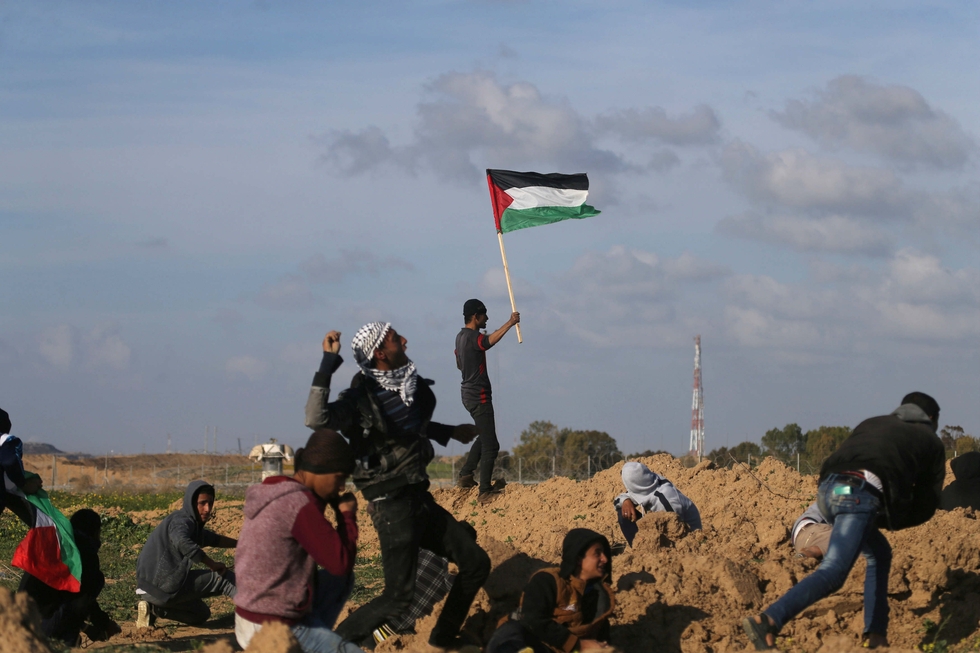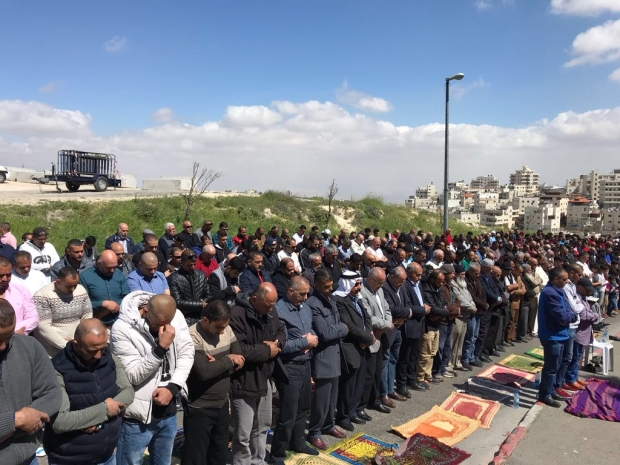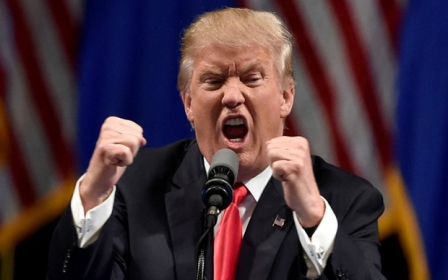100 days after Trump's US embassy move, Palestinians still protesting

In the 100 days that have passed since US President Donald Trump "acknowledged" Jerusalem as Israel's capital on 6 December, Palestinians have continued protesting non-stop.
Marches, praying in the streets, throwing stones and even violent acts such as stabbing or ramming Israeli settlers and soldiers have been part and parcel of the Palestinians' refusal to accept the White House's decision.
On Friday, declared a "day of rage" by Palestinians, residents of Al-Issawiya neighbourhood in East Jerusalem made their Friday prayer close to an Israeli military checkpoint at the neighbourhood's entrance in protest at Trump's move as well as at the daily invasions and arrests by Israeli security forces.
Al-Issawiya is on the eastern slope of Mount Scopus overlooking Jericho and the Old City of Jerusalem. It is part of East Jerusalem, which was occupied (and later illegally annexed) by Israel after the 1967 Six Day war.
Other clashes and confrontations erupted across the West Bank and the Gaza Strip, an almost daily scene in Jerusalem, Hebron, Bethlehem, Ramallah, Nablus, Tulkarm and other areas of the Palestinian territories.
In the Gaza Strip, Palestinians have peacefully protested on a daily basis near the buffer zone close to the border with Israel. The buffer zone is a flat area of land that is monitored by the Israel army with watchtowers.
Almost 67 percent of the 1.9 million Palestinians living in the Gaza Strip are originally refugees from towns and village in modern-day Israel. Their families and parents fled or were expelled by Zionist militias during the 1948 war.
Adding insult to the injury, the US declared last February it will cut its new embassy's ribbon on 14 May, which Israelis celebrate as their Independence Day.
There are several possible sites for the new embassy. The most likely plan would be to locate the embassy at a US facility in Jerusalem's southeast Talpiyot neighbourhood, currently used for consular affairs including passport and visa processing.
Palestinians consider 15 May as Nakba day, the catastrophe when almost 700,000 Palestinians fled or were driven from their towns and villages in historic Palestine.
Trump's decision over the embassy, which was rejected by 128 nations in a December vote in the UN General Assembly, caused widespread anger across the world. The result has been seen as having severe implications for the Israeli-Palestinian conflict and the US relationship with the region as a whole.
As of 12 March, 33 Palestinians have been killed in West Bank, Jerusalem and Gaza Strip, with at least 6,373 injured as a result of inhaling tear gas, enduring beatings or being fired upon with rubber bullets or live ammunition.
Around 1,319 Palestinians were arrested by the Israeli army in the West Bank and Jerusalem during January and February; 274 were minors, 23 were women, and four were journalists.
New MEE newsletter: Jerusalem Dispatch
Sign up to get the latest insights and analysis on Israel-Palestine, alongside Turkey Unpacked and other MEE newsletters
Middle East Eye delivers independent and unrivalled coverage and analysis of the Middle East, North Africa and beyond. To learn more about republishing this content and the associated fees, please fill out this form. More about MEE can be found here.





